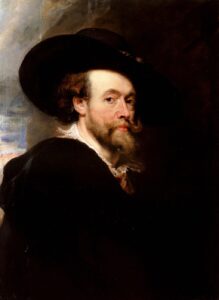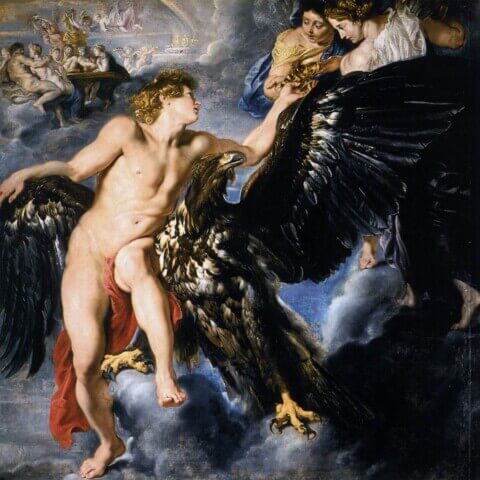Peter Paul Rubens

Peter Paul Rubens (1577-1640) was a renowned Flemish painter and diplomat, widely considered one of the greatest Baroque artists in history. Born in Siegen, Germany, to a family of Antwerp merchants, Rubens spent most of his life in Flanders, Belgium. His extraordinary talent and prolific output established him as a leading figure of the 17th-century art world.
Rubens received a comprehensive education, which included classical studies and artistic training. He traveled extensively throughout Italy, studying the works of the Renaissance masters, such as Michelangelo and Titian, and absorbing their techniques and styles. These influences, combined with his innate artistic vision, shaped Rubens’ distinctive approach, characterized by dynamic compositions, vivid colors, and sensuous depictions of the human form.
As a master of many genres, Rubens excelled in religious, mythological, and historical subjects. His works often portrayed grand narratives with a sense of drama and emotion, capturing powerful moments with theatrical flair. Rubens’ unique ability to infuse his paintings with vitality and movement, along with his exceptional skill in capturing light and shadow, added a remarkable dimension to his art.
Rubens’ artistic prowess garnered him considerable acclaim, and he became a sought-after painter for noble patrons and European courts. In addition to his artistic endeavors, Rubens served as a diplomat for the Spanish Habsburg rulers, negotiating peace treaties and forging political alliances. Despite his diplomatic responsibilities, he managed to maintain an extensive workshop, which produced numerous masterpieces.
Rubens’ influence extended beyond his own time, inspiring generations of artists. His legacy can be seen in the works of renowned painters such as Anthony van Dyck and Jean-Baptiste-Siméon Chardin. Today, his paintings are celebrated for their technical brilliance, emotional intensity, and timeless beauty, solidifying Rubens’ position as a towering figure in the history of Western art.

